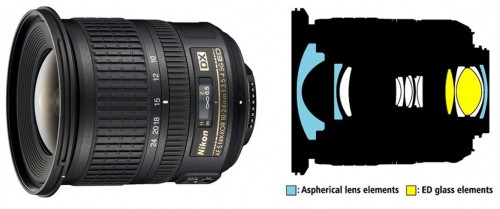Question
I own three old Nikon AF lenses from the days when I was shooting film with a 35mm Nikon (N80) camera. Last week, I bought my first digital SLR, a D90. The old lenses work fine with it, but my dealer said that new Nikon DX digital lenses would provide better image quality. How much of a benefit would I really get with new digital lenses? R.H.
Answer
Before answering your question R.H., I’ll discuss some recent developments. The newer AF Nikkor lenses come in two distinct types. The DX series was designed exclusively for cameras with a small DX-size (23.6 x 15.8 mm) sensor, so they are quite compact. The multi-platform AF lenses — now called FX format — are larger, so they’re suitable for 35-mm SLRs, digital SLRs with the DX size sensor, and with the Nikon cameras that employs a much larger (36 x 23.9 mm) sensor. (Your old lenses can be defined as multi-platform as well).
Both the DX and FX Nikkor products designed over the past several years are digitally optimized. They include superior multi-layer coatings (on more elements) to minimize flare caused by a highly reflective capture sensor and other features (as necessary) to provide optimal sharpness/brightness at the edges of the frame. In my experience, the benefits of the new developments are most obvious with short focal length lenses.
Especially if you love wide-angle photography, you’ll probably want to replace an old lens with a newer (DX or multi-platform) model that is digitally optimized. Check out the AF Nikkor DX series especially, since it includes some very short focal lengths, such as 12-24 mm or 10-24mm, for a true ultra-wide angle of view and superb image quality.
However, there are other reasons for buying one or more of the newer AF Nikkor lenses, especially if your lenses are very old. The new products all include the distance detector chip that provides better exposures (especially with flash) in some circumstances when using Matrix metering. As well, they typically include more elements of ED and/or Aspherical glass than older lenses. Finally, an increasing number of the DX and larger (FX-series) AF Nikkor series are equipped with a Silent Wave (AF-S) motor for much faster autofocus and/or a Vibration Reduction (VR) stabilizer. My tests have confirmed that these features are valuable, and they’re attractive reasons for upgrading to the newer lenses.


PeterKBurian
8 Jun 2009P.S. Some AF lenses originally designed for the 35mm Nikon DSLRs also included the distance detector chip. Lenses with this feature were designated with a D (and called D-type).
The D designation eventually disappeared because ALL new Nikon DX lenses — as well as the larger FX series (multi-platform) Nikon AF lenses — include the necessary chip.
Of course, the person who wrote the question seemed to have very old Nikon AF lenses and those were probably not the D-type.
Peter Burian
Moshe ben-Shahar
16 Nov 2010There is one very good reason for changing to digitally optimised lenses – not just because they work better on digital cameras, but because being more modern, they are generally better in every way (in addition to the factors mentioned in the article). In many cases the new lenses have VR, a feature I find extremely valuable as I do a great deal of (un-)available light photography, AND are vastly more resisitant to flare. A few months ago I was offered the chance of upgrading my old 60/2.8 Micro-Nikkor to the new internal-focus AFS version. While the new lens is less useful for really close macro work, due to the far more limited working distance, what decided me was the vastly better resistance to flare. I compared the two lenses in contra-jour light, with the sun just outside the field of view. First the old 60/2.8, which has a front element deep inside the lens body, PLUS a deep long lenshood, and despite this, there was STILL a huge amount of flare. I then tried the new lens, the front elememt of which is not recessed at all, WITHOUT a hood, and lo and behold, there was no flare whatsovever! Truly remarkable. Since available-light photography frequently entail working under such conditions, that decided me/
I
Moshe ben-Shahar
16 Nov 2010There is one very good reason for changing to digitally optimised lenses – not just because they work better on digital cameras, but because being more modern, they are generally better in every way (in addition to the factors mentioned in the article). In many cases the new lenses have VR, a feature I find extremely valuable as I do a great deal of (un-)available light photography, AND are vastly more resisitant to flare. A few months ago I was offered the chance of upgrading my old 60/2.8 Micro-Nikkor to the new internal-focus AFS version. While the new lens is less useful for really close macro work, due to the far more limited working distance, what decided me was the vastly better resistance to flare. I compared the two lenses in contra-jour light, with the sun just outside the field of view. First the old 60/2.8, which has a front element deep inside the lens body, PLUS a deep long lenshood, and despite this, there was STILL a huge amount of flare. I then tried the new lens, the front elememt of which is not recessed at all, WITHOUT a hood, and lo and behold, there was no flare whatsovever! Truly remarkable. Since available-light photography frequently entail working under such conditions, that decided me.
I